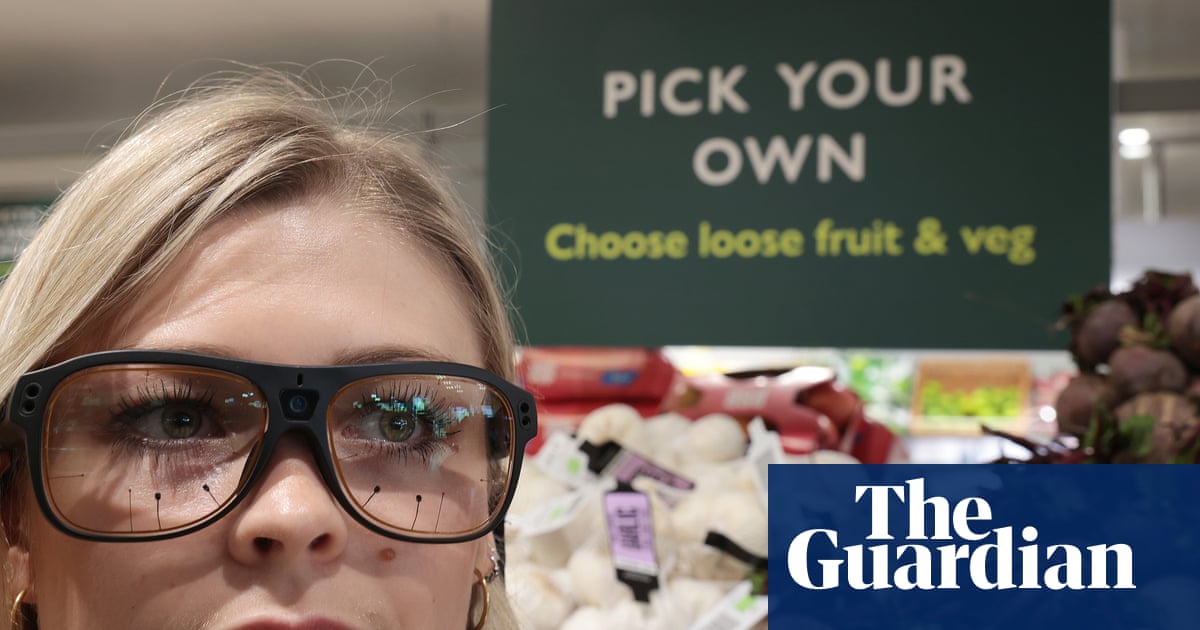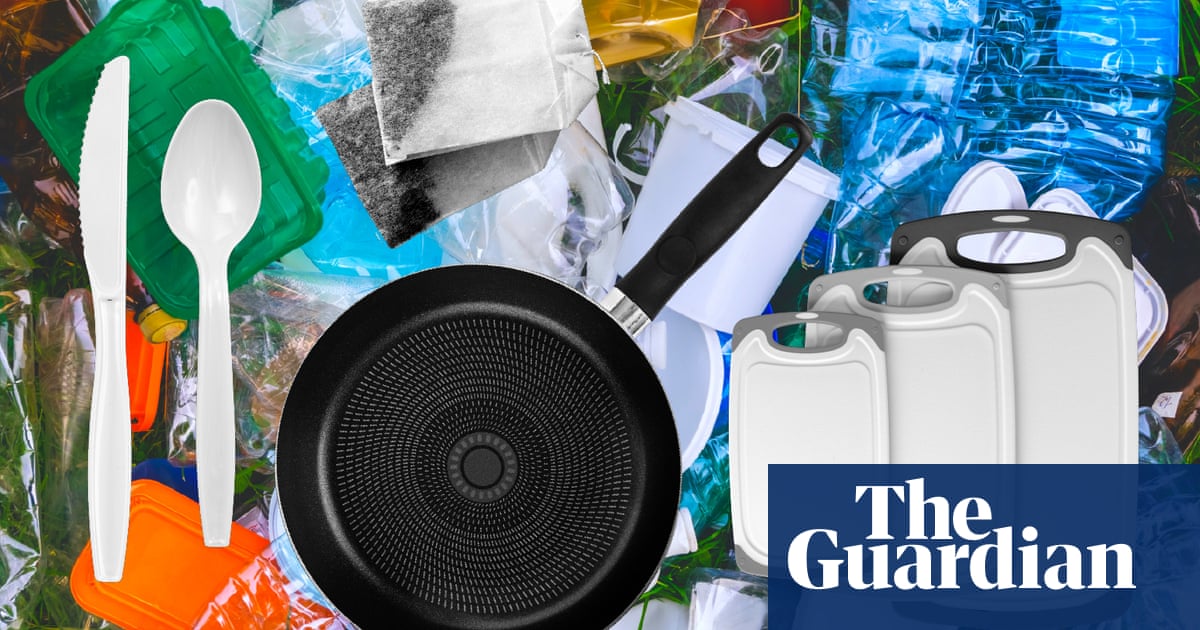
The Big Plastic Count, an experiment led in May this year by Greenpeace and Everyday Plastic involving almost 100,000 homes, revealed that an average household throws out 66 items of single-use plastic packaging in one week – the equivalent of 3,432 items in a year. How can you shrink that mountain of plastic – and can it save you money?
Assess the problem
Steve Hynd, at the environmental non-profit organisation City to Sea, says: “Keep all of the plastic you use in one week, and then make changes based on what you use the most. For different households, different things might pop up.”
Cut down in the kitchen
The most common items piling up in the Big Plastic Count were fruit and vegetable packaging and snack packets.
Wendy Graham, the author of the Moral Fibres eco blog, says: “The kitchen is the hardest room in the house to reduce reliance on single-use plastic. Supermarkets don’t do nearly enough to reduce their plastic packaging, and, in many cases, buying plastic-free food isn’t affordable, or accessible.”
Rather than thinking of cutting plastic use as an “all-or-nothing” exercise, Graham says: “Focus on what you can do rather than what you can’t.”
Changing a few habits can help. “We don’t use clingfilm. Instead, we use old Tupperware tubs to store food, or cover it with plates or pan lids. We don’t buy plastic-wrapped kitchen roll either. Instead, I keep a basket of reusable cloths for mopping up spills. These are just plain old cotton cloths, or old T-shirts worn to the point of no repair and then cut up into squares,” she says.
Remember your bag
The 5p charge on single-use plastic shopping bags introduced in 2015 has helped cut their use by as much as 97%. However, in 2019, the Environmental Investigation Agency and Greenpeace said supermarkets had sold 1.58bn “bags for life” – equivalent to 57 a household in the UK, and more than a bag a week.
“People get to the supermarket and think: ‘Oh, I haven’t got my bag with me. I’ll just buy one of these bags for life, and it’ll be really useful because then I’ll have it next time,’” Hynd says.
Except, of course, the next time the same thing happens. Forming a habit where you always keep a bag in your handbag, pushchair, laptop bag or car boot may help break the cycle.
Find out where to refill
When City to Sea’s refill campaign began, its research showed that one in five people routinely carried a refillable water bottle. In 2020, that had increased to one in two people.
The campaign started as an attempt to reduce the number of plastic bottles used each year (about 13bn a year were used in the UK in 2017, 7.7bn of which were water bottles).
The organisation’s research showed that one key driver for buying bottled water was people not knowing whether, and where, they could refill a reusable bottle.
The campaign began with cafes, pubs and shops in Bristol putting stickers in their windows to let passersby know they could come in and ask for a free water top-up but has since evolved into an app covering 135 countries and translated into nine languages. “All the National Trust properties have just signed up to it, and we have a partnership with the Welsh Coast Path showing where people can refill their water bottles along the way.”
It now covers coffee in reusable cups, loose products using your own containers, and takeaways that will fill up your lunch box. “It can geolocate you and match you to nearest places for refills. We’ve got Costa Coffee, Starbucks, Caffè Nero, McDonald’s and Morrisons supermarkets all mapped on there, as well as loads of independents,” Hynd says.
There are discounts to be had, too. Starbucks, for example, offers a 25p discount if you bring your own cup. Pret a Manger trumps them with 50p, while Costa offers extra loyalty reward points when customers bring refillable cups.
In the workplace
People buying takeaway lunches were responsible for about 10.7bn items of single-use plastic waste in 2019. “An easy way to reduce it, and also to save money, is to bring food from home,” says Anna Leitner, a campaigner for resources and supply chain at Global 2000, an Austrian environmental organisation and part of the Friends of the Earth network. “Make an extra portion the night before and take it into work in a lunchbox.”
Failing that, pick up your takeaway in a reusable box.
“In our office we have a cardboard box by the door full of Tupperware containers,” Hynd says.
“When people go out to buy their lunch, they grab one and take it with them to get their salad, or soup, or whatever it is they’re buying. Then they wash it and put it back in the box.”
Beauty and bath plastics
“The easiest and most obvious change is to switch from squirty hand soap in bottles to bars of soap. You can get supermarket own-brand soap cheaply, sold in a cardboard box.
“The next step up is swapping out bottled shampoo for shampoo bars as well,” Hynd says.
For beauty products, adopting a “use it up first” mantra is the easiest and most cost-effective thing to do, Graham says.
“If you have a cupboard or drawer full of products, aim to use them before buying anything new.”
Plastic-free periods
An average pack of sanitary towels contains as much plastic as five carrier bags, according to Natracare, a maker of “plastic-free” period products, while tampons are often wrapped in plastic, have a plastic applicator and even contain plastic in the absorbent elements and the string.
Switching to reusable menstrual products will reduce plastic waste by as much as 99%, and save money, too, Leitner says.
“You can get a menstrual cup for as little as £10, and it will last up to 10 years – in comparison, women spend an average of £100 a year on disposable hygiene products.”
The website hey girls … sells menstrual cups for £10.40 (and other non-plastic period products), while Mooncups cost £20.95 (£1 of which goes to City to Sea).
Period-proof pants are widely available on the high street – at Marks & Spencer (from £18 for three), John Lewis (from £10) and Primark (from £6), to name a few. Prices and absorbency levels vary, as of course do periods, but they can provide equivalent protection to up to three tampons. A pack of 18 Tampax Compak Regular (which have plastic applicators) costs £2.10.
In the garden
“Plant pots are probably the biggest plastic problem,” says Alys Fowler, the author of The Thrifty Gardener.
“A lot are quite well-made, so it’s about keeping and reusing them, washing them and stacking them properly, because you get very irritated with them when there’s a proliferation of them.”
Think about the pots as part of your purchase, she adds. “If you’re buying a plant in a pot, you should see the pot as a resource, too. If you don’t want more pots, don’t buy the plant.”
Instead, she says, grow more from seed and reuse your existing pots in the process, or order “bare root” plants direct from nurseries. “Nearly every nursery now does online sales,” Fowler says. The best time to buy and plant them is in the colder months, when the plants are dormant.
Heavy-duty plastic compost bags can be used as rubble bags or pierced for ventilation and used for leaf mulching. Turned inside out and with holes made for drainage, they can make containers for growing potatoes.
Meanwhile, learn to live with weeds, or pull them up, rather than trying to prevent them with plastic. “Home gardeners often buy plastic weed suppressing membrane. It is quite a tough plastic but it will degrade over time – directly into the soil,” Fowler says.












